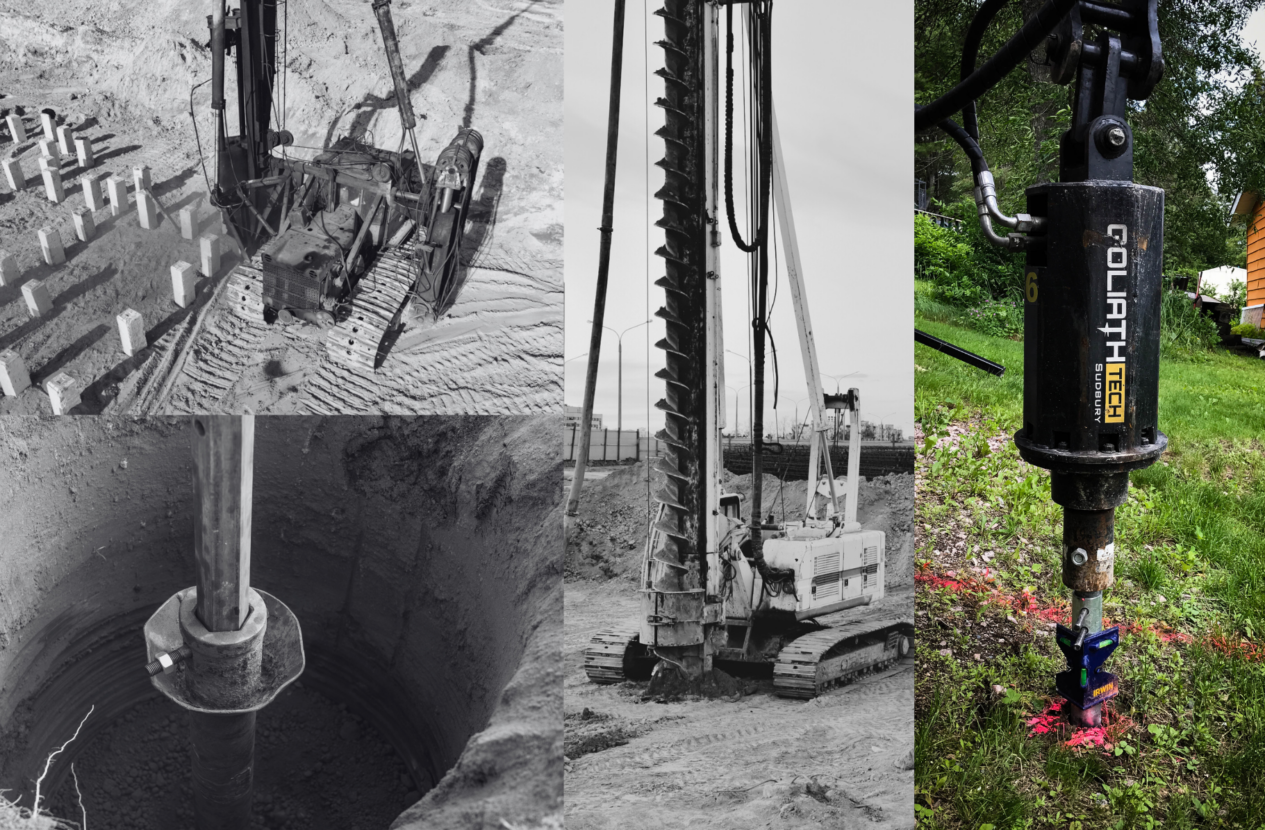Prepare to delve into the world of foundation construction, where the right choice can set the stage for structural integrity. In this article, we delve into the features, advantages, and limitations of driven piles, bored piles, CFA piles, and helical piers/piles.
By exploring their unique properties, we aim to unravel the complexities of foundation engineering and enable you to navigate the decision-making process with precision and insight.
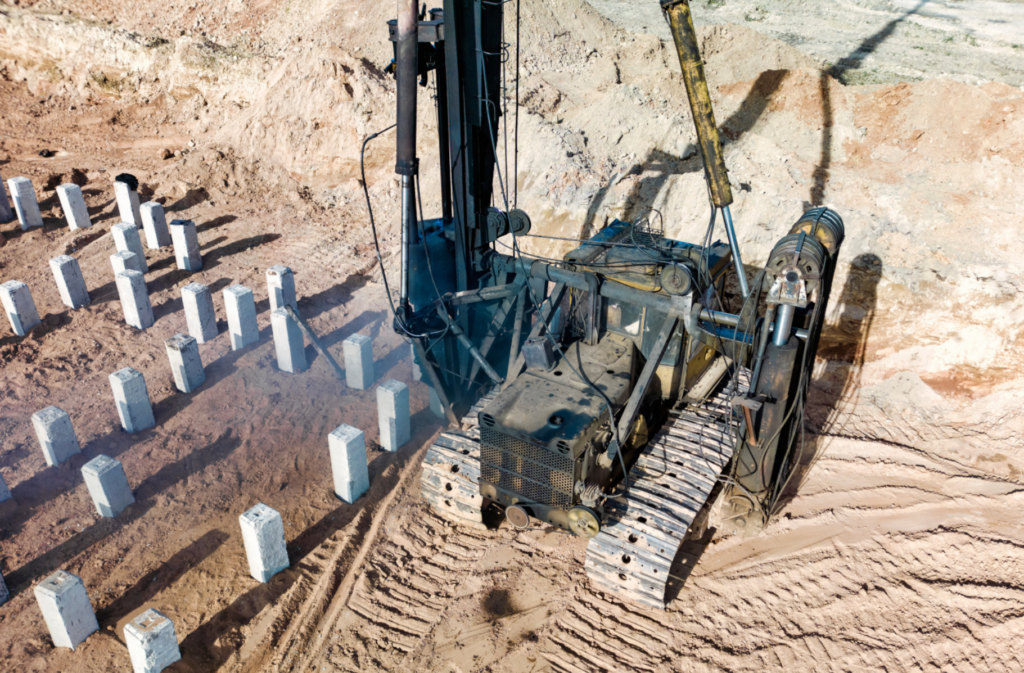
All About Driven Piles
What Are They?
Driven piles are robust structures made of steel tubes, I-beams, or H-beams, installed into the ground using impact or vibration hammers. The forceful installation process involves driving these piles deep into the soil, ensuring a strong foundation.
What Equipment Do You Need to Install Them?
Driven piles require substantial and specialized equipment. The installation process can be noisy and disruptive, as the hammers pound the piles into the ground. This method is commonly installed until refusal, guaranteeing a reliable load-bearing capacity.
What Are the Advantages of Driven Piles?
Driven piles excel in large-scale projects that demand significant load-bearing capabilities. They are a common choice for commercial and industrial projects such as multi-story buildings, bridges, and road overpasses.
What Are Their Disadvantages?
Driven piles have some drawbacks. The installation process involves large machinery, which can be cumbersome and create noise disturbances.
Moreover, there is a potential risk of damage to neighboring structures or landscapes due to the forceful nature of the installation. Consequently, driven piles are generally not recommended for smaller residential or commercial projects.
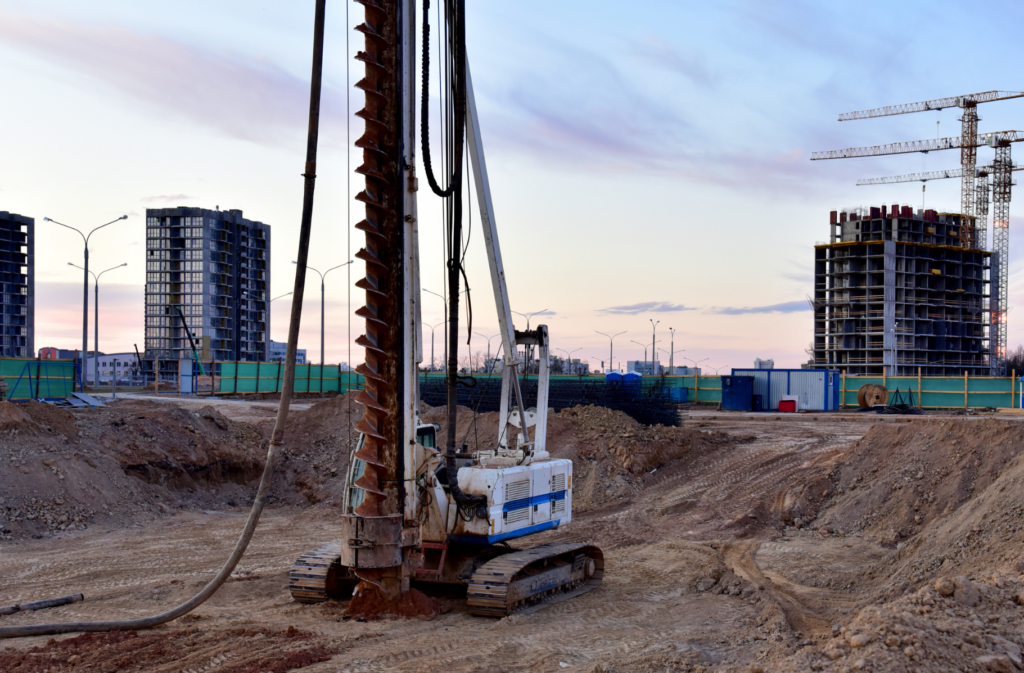
All About CFA Piles
What Are They?
CFA piles utilize a continuous flight auger to excavate a hole in the soil. A fully reinforced rebar cage is then placed in the hole, and concrete is poured to create a solid foundation. More plainly, CFA piles use a special drill to dig a hole in the ground. Then, a strong metal structure is placed in the hole, and concrete is poured to make a strong foundation.
What Equipment Do You Need to Install Them?
The installation of CFA piles requires specialized machinery capable of augering holes and pouring concrete.
What Are The Advantages of CFA Piles?
CFA piles, like driven piles, are well-suited for projects requiring substantial load-bearing capacities. They offer an efficient solution for large-scale endeavors such as multi-story buildings, bridges, and road overpasses.
What Are Their Disadvantages?
Similar to driven piles, the equipment used for CFA pile installation can be sizable. The presence of concrete introduces additional considerations, such as handling and curing. Consequently, CFA piles are not commonly employed in smaller residential or commercial projects.
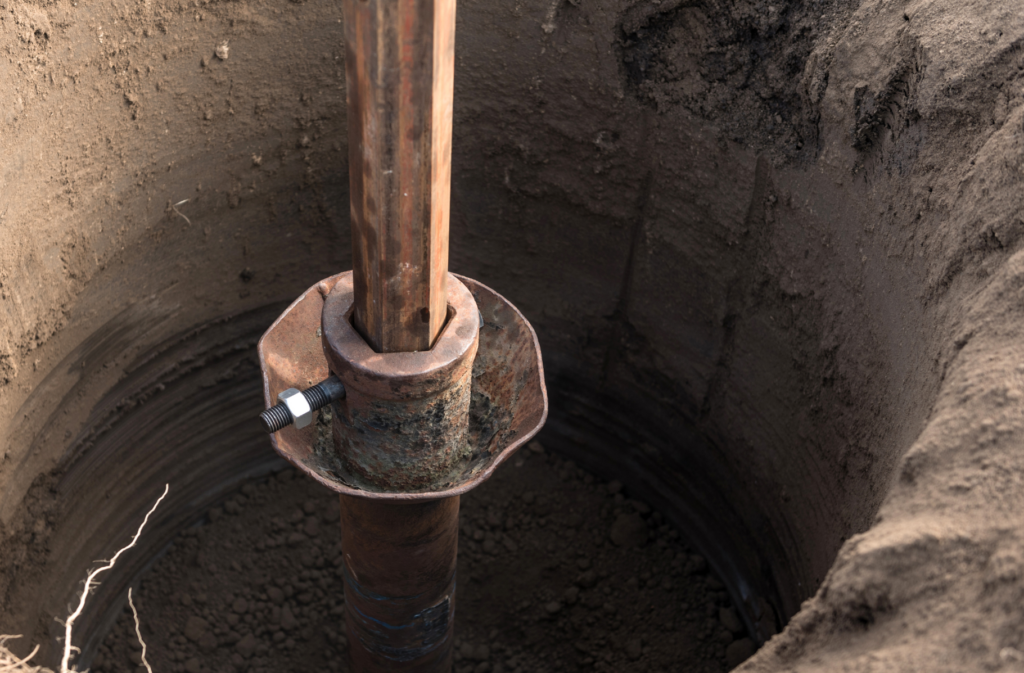
All About Bored Piles
What Are They?
Bored piles, also known as drilled shafts, exhibit a unique construction approach. Instead of driving piles into the ground, as with driven piles, bored piles are created by excavating a hole and subsequently filling it with reinforcement and concrete.
What Equipment Do You Need to Install Them?
The installation of bored piles involves the use of specialized drilling rigs that carefully excavate the soil or rock to the desired depth. As the hole is created, it is supported by temporary casings or drilling fluids to prevent collapse.
Once the excavation is complete, steel reinforcement is placed within the borehole, followed by the pouring of high-quality concrete.
What Are The Advantages of Bored Piles?
They provide high load-bearing capacity, making them suitable for supporting heavy structures and infrastructure projects.
Additionally, bored piles can be constructed to significant depths, allowing for deeper foundation support in challenging soil conditions. Lastly, the installation process of bored piles generates minimal noise and vibration.
What Are Their Disadvantages?
While bored piles offer numerous benefits, they also come with some disadvantages. One key drawback is their higher cost compared to other foundation options.
The specialized equipment and drilling processes involved in bored pile installation contribute to the increased expenses.
Another disadvantage is the longer construction time required for bored piles.The drilling process and the need for concrete curing can prolong project timelines.
Additionally, limited access or restricted space can pose challenges for installing larger drilling rigs, impacting the feasibility of using bored piles in certain construction sites.
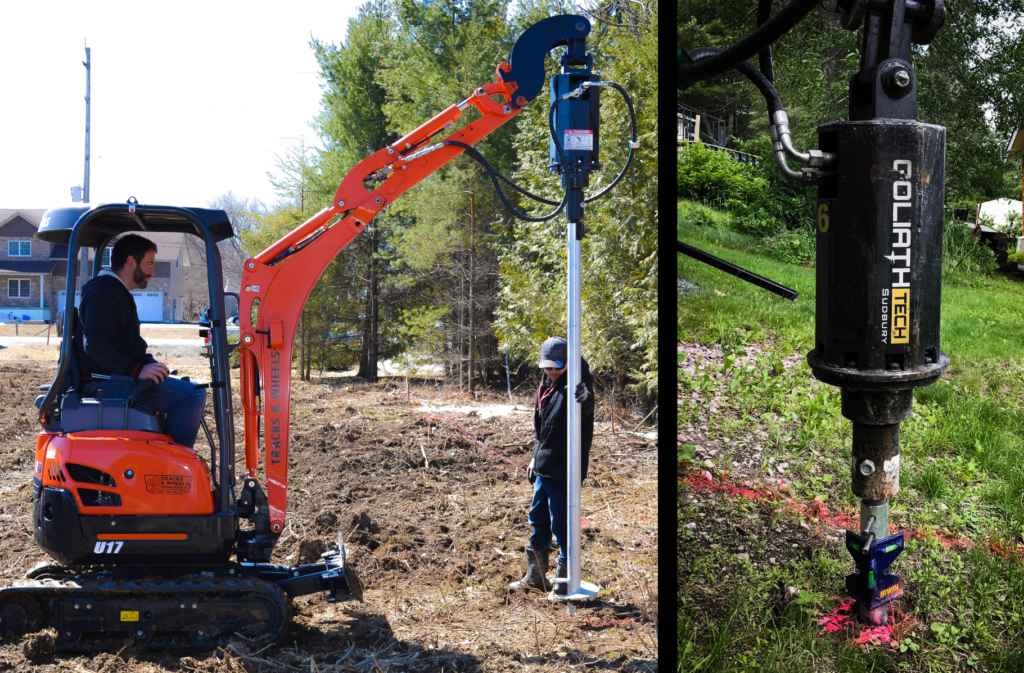
All About Helical Piers / Helical Piles
What Are They?
Helical piles (piers) feature a helical-shaped plate or blade attached to a steel shaft. This design allows the piers to be screwed into the ground, effectively leveraging the surrounding soil for stability. (Basically, they are like large screws!)
The helical plates create a gripping action that enhances the load-bearing capacity of the piers, making them a reliable choice for foundation reinforcement.
What Equipment Do You Need to Install Them?
The installation of helical piers/piles involves driving or twisting them into the ground using light and compact equipment for smaller projects and heavier machinery for projects requiring larger helical piles.. As the piles are installed, the helical plates gather resistance from the soil, creating a secure anchor point.
This innovative installation technique offers several advantages, including minimal disruption to the site, quicker installation times, and the ability to load test the piles immediately after installation.
What Are Their Advantages?
Helical piers bring several advantages to construction projects. Firstly, they offer versatility and adaptability, being suitable in all soil conditions, including areas with high water tables, expansive soils, or areas prone to settlement.
Secondly, helical (screw) piles have a minimal impact on the landscape, as they require less excavation compared to other foundation methods. This reduces the impact on the construction site and surrounding areas.
Additionally, helical piles provide immediate load capacity, allowing for immediate load testing after installation.
Since no concrete is required, this feature enables engineers to verify the performance and load-carrying capacity without waiting for concrete curing or settlement.
Moreover, the installation process is typically faster compared to other foundation systems, resulting in shorter construction timelines.
What Are Their Disadvantages?
While helical piers offer several advantages, they have relatively few disadvantages.
One aspect to consider is that helical piers typically have less lateral capacity than concrete foundations, especially when installed in soft soils. However, this issue can generally be solved by using bracing or battered piles.
Conclusion
The optimal choice among driven piles, bored piles, CFA piles, and helical piers/piles depends on the specific needs of each project, as each method has its own set of advantages and disadvantages. It is important to assess the requirements of the project before making a final decision.
About GoliathTech
Since 2004, GoliathTech has been the most important manufacturer and installer in the helical (screw) pile industry worldwide. Our patented helical pile foundation system surpasses industry standards and has earned us multiple awards and prizes.
Carried out by certified installers, our quick installation process avoids excavation, which protects your landscape and allows you to begin building as soon as the piles are in the ground. Moreover, you can anchor GoliathTech’s helical pile foundations into any soil or space year-round. Installed deep into the ground, beneath the frost line, they solidly support the structure in even the most extreme conditions. Our technology guarantees that a helical (screw) pile foundation won't move or crack over time.
Integrating both strength and know-how, GoliathTech offers the best anchoring solution to support your residential, industrial, commercial, and municipal projects. Trust the experience and expertise of GoliathTech for your foundation projects. Find a certified GoliathTech installer in your region or become a franchisee.
Share this Article


